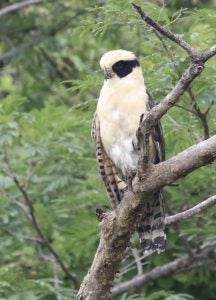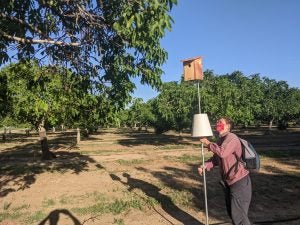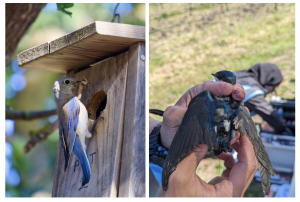Agriculture now occupies ~50% of Earth’s land surface. Yet ecologists often overlook opportunities for pursuing conservation in ‘working landscapes’ composed of pastures, crop fields, and forest patches. Our lab has shown that many species can be found in diversified agriculture (i.e., farms with patches of native vegetation and high crop diversity). For example, using a 12-yr dataset of >125,000 bird observations in Costa Rica, we showed that that diversified farms can maintain similar levels of phylogenetic diversity as rainforests. Whether agriculture can continue to support biodiversity as the climate changes is less clear. To understand how land-use and climate change are interactively shaping communities, we established a study system in Costa Rica consisting of independent gradients in regional climate, forest cover, and local land use. Across 150 sites, we modeled precipitation, mapped forest cover, and surveyed birds for 5 years. Check out this video to learn more about the study system:

A lot of really interesting findings came out of our work in Costa Rica. For example, we found that diverse communities can be found on farms, but species responses to agriculture are scale-dependent, species-specific, and nonlinear. We also developed a novel modeling framework to quantify effects of farming on animal behaviors, and, after applying it to our data, found that birds were significantly more likely to exhibit reproductive behaviors in forests than in agriculture. We also found the kinds of species that live in agriculture are different from those in forests. For example, vulnerable species were rare in agriculture, but thrived in privately-owned forests (even though these forests were fragmented and disturbed). In contrast, widespread, dry-adapted species dominated farms. As a result, our models predicted forest species would lose ~60% of their ranges to climate change by 2070 whereas agricultural species would lose <30%.
Together, this work suggests climate change may have a big impact on species in agriculture. Using ~20 years of bird nesting data in California, we found that heat waves reduce nestling growth and survival. Yet heat waves are not felt equally everywhere. Agriculture often results in tree removal, eliminating shade for wildlife to use as thermal refuges. In a lab-wide project initiated during COVID, we used crowd-sourced data from Project Nestwatch to study how heat waves affect bird reproduction in different land uses across the U.S. After analyzing ~152K nesting attempts by 58 species across 23 years, we found that heat waves provoke dramatic declines in nesting success in open agriculture but not in shaded forests. If heat waves are frequent enough, then organisms may start avoiding human-dominated landscapes altogether. Using another crowd-sourced dataset— SnapShot USA— we provided the first evidence that ~30 North American mammals change their habitat preferences across their ranges, increasingly avoiding human-dominated landscapes and retreating into forests in hotter regions.
Ongoing work

Now, we are seeking to unravel the mechanisms by which heat waves affect wildlife in agriculture. From 2021-2023, we monitored >200 bird nests in nest boxes in forests, grasslands, orchards, and row crops near UC Davis, collecting data on nesting success, adult and nestling physiology (i.e., via blood sampling for stress hormones), and nest visitation (i.e., via remotely triggered cameras). These data will be used to determine if heat waves affect birds directly by inducing hyperthermia and/or if heat waves reduce food provisioning rates to young birds.

With funding from the Agriculture Research Institute, we also initiated a project across 20 Napa Valley vineyards that will unravel how heat waves and farming practices affect bird foraging patterns and reproduction. Specifically, we are tracking bluebirds and swallows with GPS backpacks to determine whether heat waves cause adult birds to reduce their activity and seek shade. Using automated perch monitors and DNA barcoding of fecal samples, we will then assess how changes in movement affect food provisioning rates, avian diets, and nestling growth and survival. Looking forward, we are seeking funding to expand this work to other regions and taxa. Ultimately, if we can pinpoint how heat waves constrain species’ movements and space use, as well as identify associated costs, then we could account for such constraints when delineating species distributions as climates change and the human footprint expands.

Looking forward, we also expanding this work in exciting new directions. For example, we are exploring the impacts of anthropogenic noise on bird foraging, space use, pest control, and food provisioning in a large-scale noise experiment across Napa Valley vineyards. We are also studying how exploring changes in avian molt phenology along temperature and urbanization gradients to understand how climate and land use change may be affecting this critical stage of the avian life cycle!